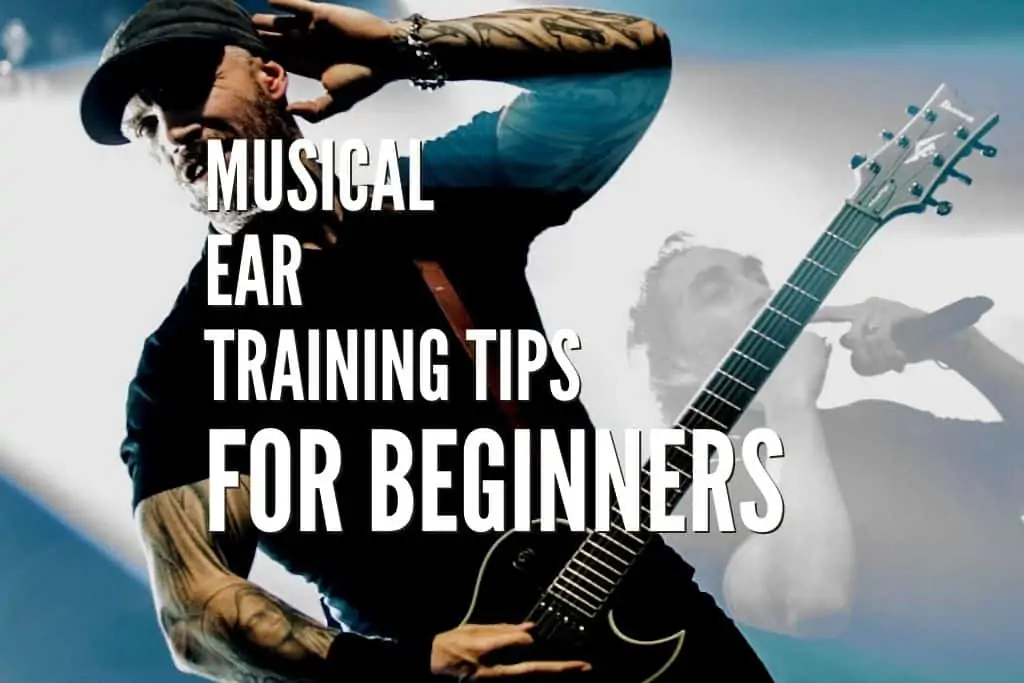The musical ear is something that plays a major role in guitar playing. By this term, people usually describe the skill to hear exactly what tone is played and sometimes even what chord is played. Furthermore, it allows you to focus on a certain instrument and understand better how things work.
There are several ways that you can train your ear to better understand and even hear music.
Listen To A Lot Of Music

Now, this might sound like silly advice, but it will help you a lot in the end. The more you listen to music, the more you’ll understand and see certain patterns. The first thing you’ll need to understand is that you have to take it slow. It is not something that can be trained overnight, and usually takes a lot of practice and experience.
When you listen to your favorite songs, try asking yourself questions; for example, can you differentiate low and high sounds? Is there any unusual noise in the song? Is rhythm fast or slow? Are sounds quiet or loud? Try to answer as many questions as you can before going further. It might help you realize what your skill level is.
Over time you will understand better how music works, and how everything is rather similar in the end.
Keep Practicing The Guitar
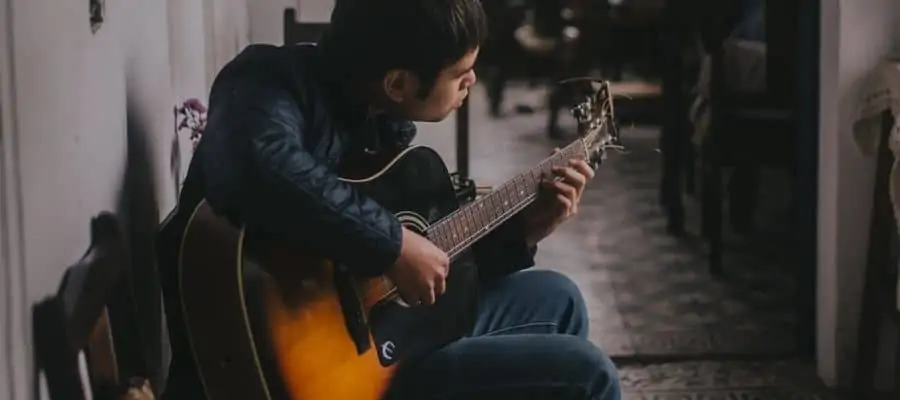
It is important to constantly be in touch with the instrument and music. Similar to practicing the guitar, there is also a form of muscle memory. This time it is more like an audio memory. When you keep repeating the scales or chords while practicing, you will memorize the sequence and the sounds that you play.
Over time you will be able to hear a fret or a note without playing it. That is one of the main goals of training. It will help you play better, as well as improvise while playing. The possibilities are endless.
Naturally, by playing the guitar, you will also train your ear more and more. Try to embrace as much as you can while playing, instead of mindlessly repeating patterns on the guitar.
One of the ways to improve your ear is by “brute force.” This means that you’ll have to keep repeating patterns and notes until you memorize them. So, one of the options is to simply pick your favorite scale and repeat it until you can remember each interval and note.
If you are having a hard time staying motivated to play the guitar. then check out my post How I Motivate Myself To Play Guitar Every Day – 15 Tips
Keep Testing Your Hearing

You should constantly test your hearing. The second part of the testing is in the literal meaning. If you ever had trouble hearing something, and if someone has to repeat the questions every time they talk to you, make sure that your hearing isn’t damaged. Of course, if you can and if you always could listen to music without any issues, there is a high chance that everything is fine.
The other form of testing is music-wise. Keep asking yourself the question about music and understanding. Try to train your ear as much as possible by constantly testing and challenging yourself.
Finally, try to protect your hearing as much as possible. Avoid listening to loud music with headphones. If you are playing guitar with an amplifier, you should get earbuds.
Practice Your Ear With Guitar

Since you already play the guitar, you should use it to your advantage when training your ear. Try memorizing a certain note or a pitch. You could lose nothing if you try to tune your guitar without a tuner. It is a rather useful skill if you could tune it using only your ear.
Furthermore, you could practice hearing the difference between notes, semi-notes, and everything that you play. One of the other ideas that you could try is to try and match the note with your voice. Of course, if you are not a singer and you have no plans of becoming one, don’t feel bad. It is not the end of the world, and you don’t need to be a good singer in order to play the guitar.
Learn Basic Theory
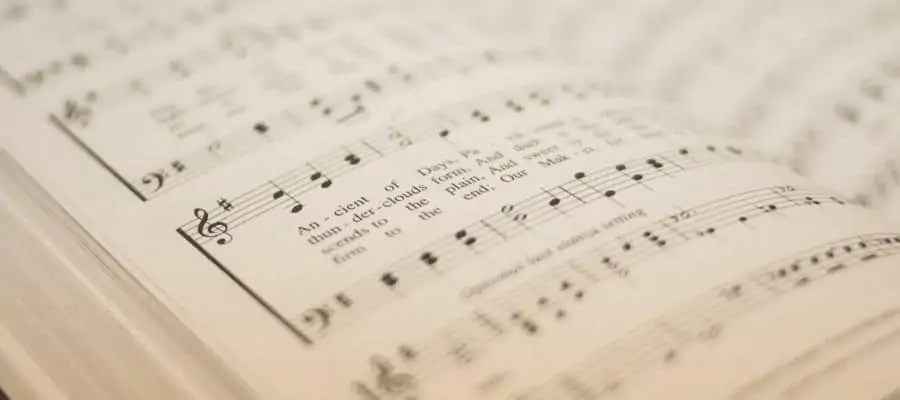
The theory is useful. It’s simple as that. Many guitarists avoid theory like plague for some mysterious reason. You don’t have to be a university professor, but learning basic theory will be only useful. If you understand how certain things are built, how they work, you will easier play them, and there is less chance that you’ll forget something.
For example, understanding how the major scale is built will help you hear the difference between semitones and full tones easier. Of course, everything else you learn will only help you. There is a reason why people who finished music school, are able to play something with ease and hear better. If you understand how scales and modes work, you will be able to hear when someone uses them in a song.
If you are a beginner to music theory you should definitely check out my post Guitar Music Theory In-Depth Basics
Pitch Ear Training Exercises With Bends

This is one of the most important aspects of the training. It will help you determine how high or how low note is. Practicing bending notes is one of the best ideas when it comes to pitching training. Not only that you’ll master the bending technique, but you will also train your ear. Since when bending notes, you will have to push the string until it reaches a certain note. Depending on the note you are bending, that can be halftone, tone, tone and a half, and even two tones.
While two notes are a bit extreme when it comes to bending, and they are not something that is easily achieved, it is still a great skill to learn.
By mastering a bending technique, you will train your ear to know when you hit a certain note. While micro-bends are a thing nevertheless, you would still need to train enough to know when to stop bending. This way you can practice both pitch and intervals.
Interval is simply a difference between two notes. You will need to know the difference between a semi-note which is one fret, and a full note which is two frets on the guitar. Naturally, the more you play the more will your ear remember the difference. Besides, you should always check how far you came, and test your abilities regularly.
Chord Training Exercises
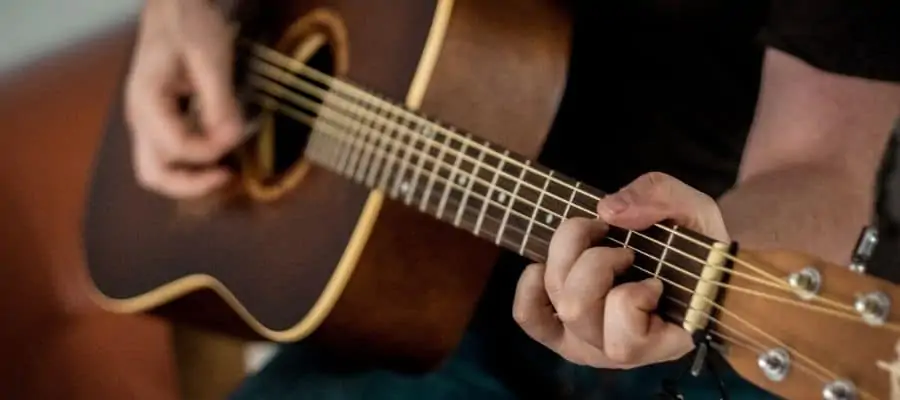
When it comes to chords, things get a bit more complicated. When you play three or more notes, you get a chord. There are four main types of chords major, minor, diminished, and augmented. Each of these will have a different vibe to it. For example, the major chord will sound cheerful, happy, like a triumph, while minor chords will sound sad, scary, and eerie.
One of the easiest ways to practice them is by playing each type. You can start by playing only minor and major, and practicing to learn the difference. After that, you will add augmented and diminished chords.
When you train enough to know which type of chord is played, you will focus on the root note to know which chord it is exactly. Now, most of the songs use some kind of standard chord progressions, so you could know which chords are played after that. Naturally, if you don’t know that part from the theory, you can continue to do the same with the rest of the chords.
There are several ways the chord can be played, and you should practice four-note chords for example, where sometimes root notes will not be played at all. But you should leave this for later. The same thing will apply to broken chords and arpeggios.
The ultimate goal you want to achieve with these exercises is to successfully recognize the chord and play it on the guitar yourself.
If you are a beginner and would like to know more about chords, you can check out my post Beginners Guitar Chords – The Ultimate Beginners Guide
Chord Progression Exercises
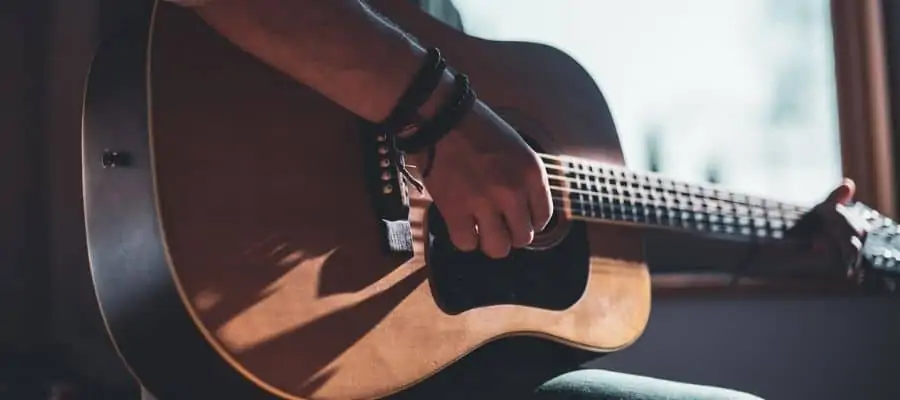
Whenever you hear more than one chord played in a sequence, you should know that it is a chord progression. The circle of fifths is a term used to describe the connection between twelve notes in the chromatic scale. Basically, between each note that you can play on the guitar. It originated in the 17th century, and it is still commonly used among musicians.
One of the easiest chord progressions is with two chords only. This two-chord progression is also called a cadence, and the basic exercise will be recognizing two chords only. Like almost anything in music, you will start slow with small steps. So, after understanding the connection between two chords, you will proceed to add more.
There are thousands of popularly called “three-chord songs.” You would be surprised to know how many famous songs use only three chords. Furthermore, you would be surprised to know how many songs use the same three chords!
While this may sound a bit complicated, you would mostly use the knowledge from triads and pitch and interval exercises and just take them one step further. For beginners, it might sound impossible to recognize six notes played at the same time, but it is something that you’ll learn over time.
if you wish to know more about chord progressions, you can check out my post 24 Guitar Chord Progression You Must Learn (Common, Rock, Sad, Jazz)
Scale Ear Training Exercises
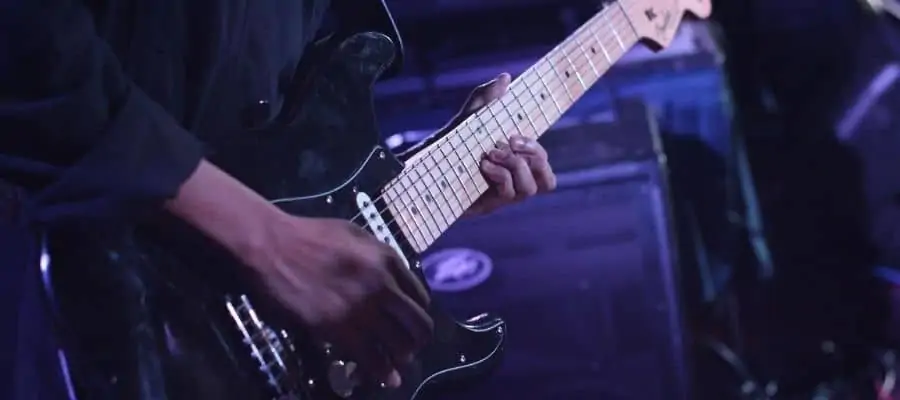
While there are many guitar players who simply memorize the pattern and then repeat it endlessly, there is so much more to be learned from scales.
If we take one of the most important ones, C major scale, in theory, we will use that one simple scale to create most of the western music. But it is a good idea to understand how that specific scale works. The main questions are how the scale is built, and what are the tones in that scale.
With this knowledge and a tiny bit of music theory, you will understand how to build chords, modes, and other scales.
We will continue to build the knowledge from previous steps, and focus on the intervals between notes. C major scale has seven notes, and those notes are built in a sequence. The sequence is C, D, E, F, G, A, B, and then C again just one octave lower. As we can every note has a full note between them except E and F, and B and C. So we could use this pattern to create any other scale. Semi note would be between the third and fourth notes, and between sixth and seventh.
Each of the modes of the Major scale will have a different feel (similar to the difference between minor and major chords).
Identifying Notes
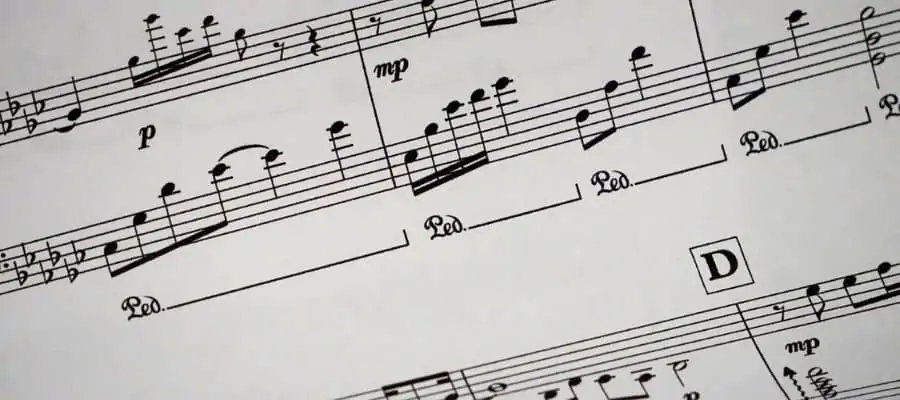
You probably saw people that are able to hear the notes and just say the name of them. It is not an easy skill to learn, and there are so few people born with this skill.
But it is possible to learn it, and the best way to do it is to practice. There are a few ways you could practice your ear for this task.
The first one is playing. If you practice enough and play the guitar as much as you can, you will remember the sound of certain notes. You can use this as a benchmark for identifying other notes. For example, if you remember and if you always know how C notes sound, you will be able to count the note that you’re looking for. By counting, we mean calculating the interval between C note and the note you are trying to identify. One of the best ways to do this is to memorize the major scale. Most of the musicians will use one-note as a reference, and then calculate the pitch relative to that note.
There is a reason why almost every teacher told you that famous Do, Re, Mi, pattern. That is a major scale.
The other way you could do this is to find a tool that will help you practice. There are so many courses and quizzes online that can help you train. You can find the quiz that will play you a random note, and your goal would be to identify the note that is played.
Reading Music And The Ability To “Hear” What You Read

Finally, this will be the ultimate goal that you’ll try to achieve. Through countless hours of practice, many schooled musicians are able to look at the notes on the paper and hear the tune that is written.
This is one of the hardest things to do when it comes to music, and it will require you to perfect all the previous steps. Furthermore, you will have to know how to read sheet music. One of the most important things that you should remember is that none of these musicians were born with that incredible ability. They achieved it through practice.
Tabs Vs No Tabs
Tablatures are one of the most popular ways of writing guitar music. And the reason for that is that they are simple and easy to use. There is no confusion since each string is marked and there is a number that will represent the fret.
But using tabs comes with a downside. Unlike in music school, you will skip most of the steps we mentioned so far, and you’ll go to the reading part of the music, even though you are a beginner. One of the best ways to learn how to play guitar and train your ear is by listening to records and trying to play along without any other help.
While this way is a lot harder, it is much more rewarding. You will spend a lot more time learning a certain song, but when you finally manage to find all the notes from the song, your ear will be much more trained compared with the person that simply found tabs and memorized where to put fingers.
Of course, probably the best idea would be to combine both methods and learn that way.
Practice
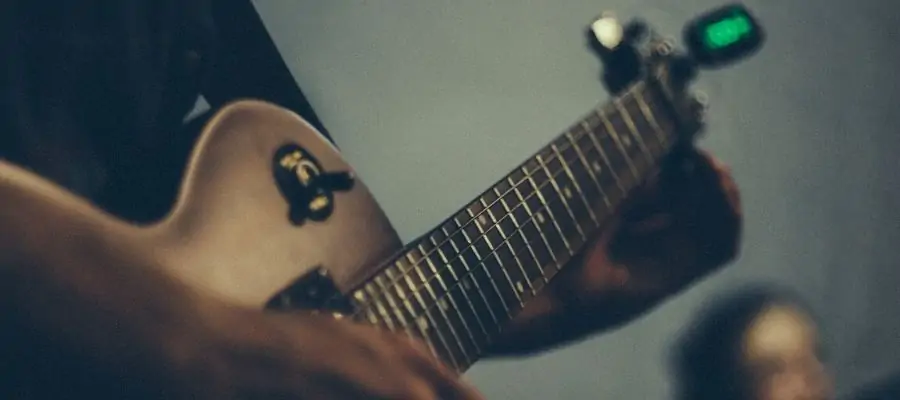
Finally, it all comes down to practice. If you don’t spend enough time with your guitar, there are no tips that will help you with training your ear. By practicing over and over for countless hours, you will train your echoic memory and learn to remember sounds instead of shapes.
There is a reason why practice is the most important tip that you’ll ever get when it comes to music. Try to spend as much time as you can afford to practice. And you will see the results faster than you can imagine. There are famous guitarists that spend ten hours each day practicing and learning new songs, trying to mimic the sounds that came from their record player. And this is the main reason why all of us heard about players like Eddie Van Halen, Eric Clapton, Stevie Ray Vaughan, and others.
Practicing will help you improve your dexterity, speed, and you will train your ear along the way. Think of your musical ear the same way you think of your fingers. You need to repeat something several times to be able to play it perfectly. It is the same with your ear. Over time, and with enough practice, you will have a perfect musical ear.
If you found this article useful, you may want to save this pin below to your Guitar board.

Recent Posts
Some guitarists insist on buying an expensive amplifier with their electric guitar. They assume that this is a must for every type of guitarist out there. However, in some situations, this isn’t...
Top 50 Free Realistic Guitar VST Plugins With Sound Examples
As technology has rapidly advanced in the recent decade, computers are stealing more and more roles from physical musical instruments and accessories. Nowadays, you do not need expensive amps,...

